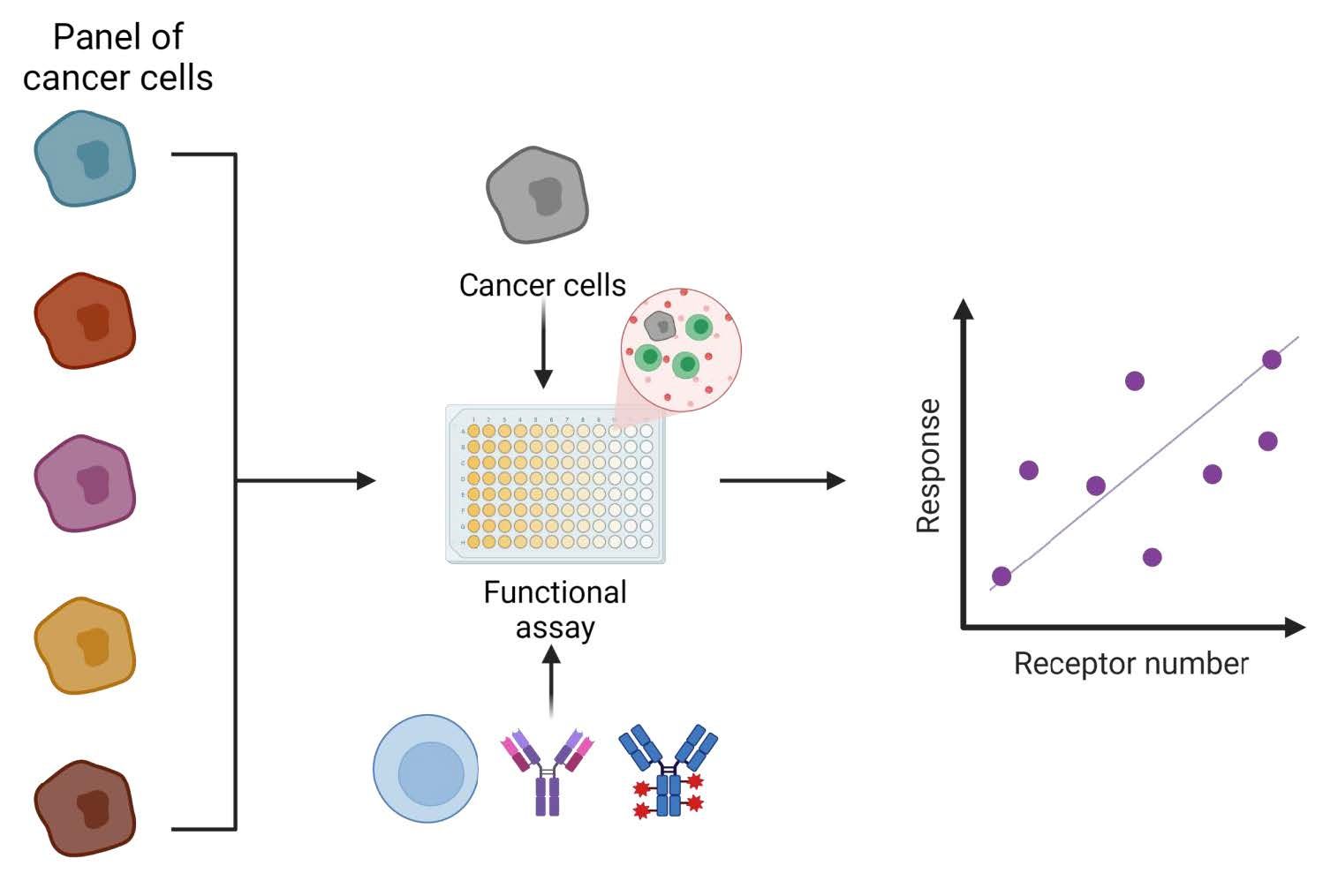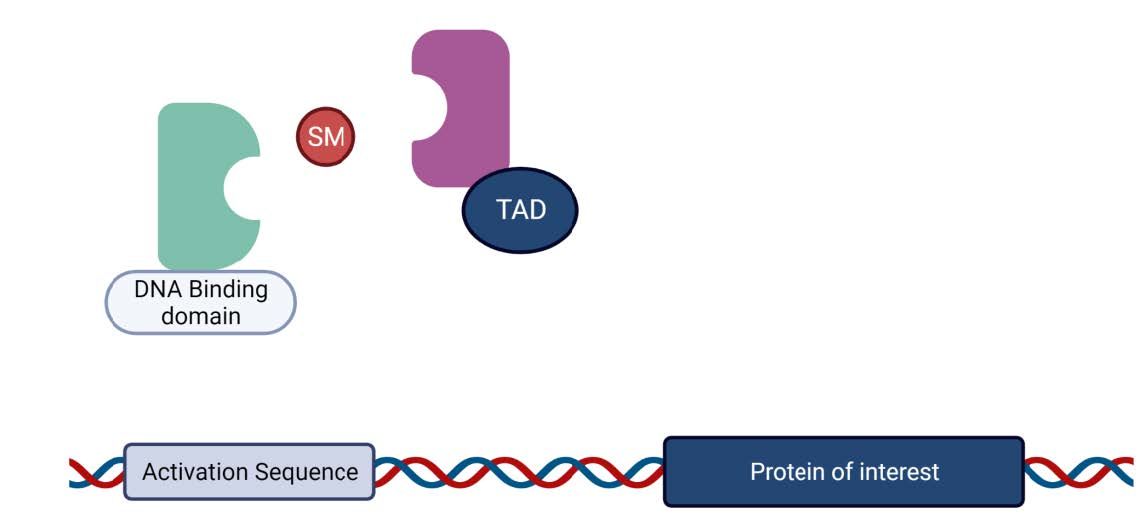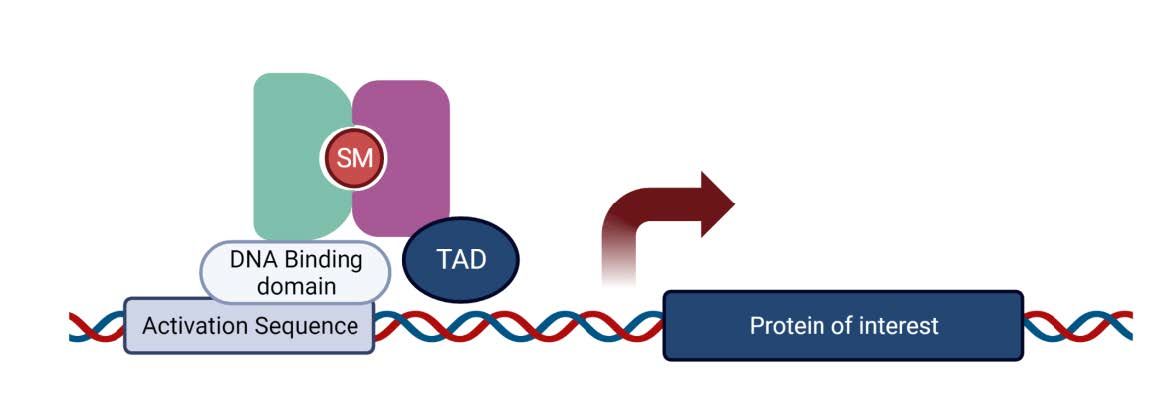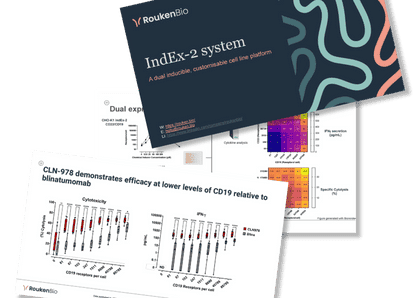Index-2: Quantification of the antigen density activation threshold for targeted immunotherapeutics
Explore our research poster as we analyse the data from our new cell line development platform, IndEx-2.

|
September 15, 2023
|
3 min read
The research and time that has been put into our IndEx-2 platform has led to the development of a highly efficient inducible cell line development tool, packed with unique features and transformative capabilities.
This advanced inducible cell line model will accelerate the drug discovery process, through facilitating the determination of precise antigen density activation thresholds of targeted candidate immunotherapies early in the drug discovery phase. So now we are proud to present our research poster showing all the data you need to see how IndEx-2 works.
Current approaches and IndEx-2
Approaches currently in use analyse and understand the impact of antigen density on therapeutic therapies rely on cell lines with varying levels. This can lead to slower research, which takes longer to deliver results.
IndEx-2, our in vitro cell-based platform allows the expression of one, or two, target antigens over a range of biologically relevant levels, facilitating the determination of the precise antigen density activation thresholds of targeted candidate immunotherapies.
The data from across our research poster on IndEx-2 features key information, detailing the capabilities and actions that can be performed using this rapidly customisable and multi-purpose cell line development tool.
Significance of target antigen density
The multi-specific nature of bispecific antibody-based oncology therapeutics introduces many different layers of added complexity when looking to demonstrate appropriate levels of safety and efficacy.
There is currently a shortage of in vitro systems available to overcome this hurdle. Through our latest cell line development platform, IndEx-2, we have effectively demonstrated the overall integration capabilities and options to use this platform across multiple different types of assay formats.
Understanding IndEx-2 and its capabilities
To learn more about all the capabilities and applications of our fully inducible cell line development platform, speak to one of our scientists. Our experts can provide more details and information about the science behind IndEx-2, as well as the difference it can make when integrated with immune-oncology primary cell assays to provide a complete picture of a targeted drug candidate’s mechanism of action and safety profile.
If you would like to discuss the capabilities of IndEx-2, arrange a meeting with one of our experts here:
Introduction
The number of antibody-targeted I-O therapeutics in development is growing Y-o-Y, yet there persists a lack of in vitro systems to interrogate the efficacy and safety of these modalities. We have developed IndEx-2, an in vitro cell-based platform which allows the expression of one, or two, target antigens over a range of biologically relevant levels, allowing the determination of the precise antigen density activation thresholds of targeted candidate immunotherapies.
The importance of target antigen density
Bispecific antibody (BsAb)-based oncology therapeutics are promising therapeutic modalities, but their multi-specific nature introduces layers of complexity when trying to demonstrate efficacy and safety. There is a lack of appropriate in vitro systems to assess the impact of cell-surface protein levels of the respective targets on efficacy and safety. This is vitally important for T-cell engagers and CAR-T cells, which are hampered by ‘on-target/off-tumor’ toxicity towards healthy tissues (J. Immunotoxicol. 17, 67–85). This side-effect is often not observed until the clinical trial stage, at which point significant financial investment has been made.

Titratable antigen expression in assays
The inducible expression system can be used to assess the impact of target antigen density on the efficacy and safety of molecules such as T-cell engagers (TCEs), antibody drug conjugates (ADCs) and Chimeric Antigen Receptor (CAR)-T cell therapies.
CIP-based systems for titratable expression
Chemically Induced Proximity (CIP) systems use membrane-permeable, small molecule inducers to control dimerization between proteins of interest that are fused to the inducer-binding proteins. These systems can be adapted to switch on transcription of a target antigen of interest (TAOI) by means of bringing a DNA binding domain into proximity of a transactivator and placing the binding motif for the DNA binding domain upstream of the antigen of interest.


Controlling two target antigens
A dual targeting CAR specific for both CD19 and CD22 was employed. This CAR was designed to combat antigen escape and thus requires engagement of either CD19 or CD22. The dual inducible cell line was employed as the target cell in a cytolysis assay, with CD19 and CD22 expression under the control of two independent CIP systems. The CD19/CD22 ‘OR’ CAR-T cells were employed as effector cells.
Join our community of curious minds on LinkedIn
🗓️ Stay informed with our monthly scientific newsletter, published on LinkedIn on the last Wednesday of each month.
These editions bring you the latest in drug development breakthroughs, industry trends, and expert insights from the brilliant minds at RoukenBio.
Subscribe today on LinkedInDiscover our transformational IndEx-2 system
Our rapidly customisable in vitro cell line platform can be used to determine antigen density activation thresholds of targeted candidate immunotherapies. IndEx-2 can be easily integrated with immune-oncology primary cell assays, so it can provide a complete picture of a targeted drug candidate’s mechanism of action and safety profile.
Access exclusive dual inducible data

